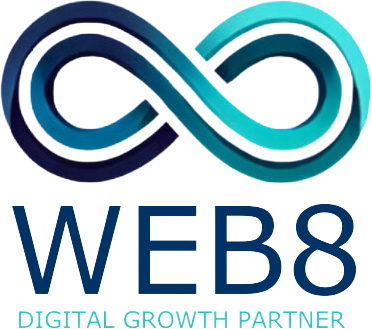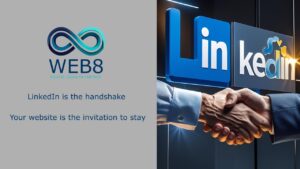Kia ora e hoa ma
The Magic Number: How Many Touches Does it Take to Close a B2B Sale?
In the world of B2B sales, it’s often said that selling is a bit like dating. You can’t just ask someone to marry you on the first date, and the same goes for business. Building a relationship takes time, trust, and, importantly, multiple touches. But how many exactly? And how do you make sure these touches are effective, especially in our fast-paced, digital world? Let’s dive into the magic number and explore how email marketing and automation can help smooth the journey from first contact to closed deal.
The Number of Touches: What’s the Sweet Spot?
If you’re in sales, you’ve probably heard the stats thrown around: “It takes 7-13 touches to close a sale.” While this number might vary depending on your industry, product, or service, the underlying message is clear—closing a B2B sale is rarely a one-and-done situation.
In fact, a study by Salesforce found that 80% of sales require at least five follow-ups after the initial contact. Think about that for a moment—most of your competitors might give up after one or two attempts. This gives you a huge advantage if you’re willing to play the long game.
Why So Many Touches?
B2B sales often involve larger investments, more decision-makers, and longer sales cycles compared to B2C. Decision-makers need time to evaluate options, consider ROI, and get buy-in from other stakeholders. Each touchpoint serves a unique purpose, whether it’s introducing your solution, addressing concerns, or simply reminding the prospect that you’re still there.
The Power of Email: Preferred by Many
Now, let’s talk about how to make those touches count. According to HubSpot, 73% of millennials—now a major force in the business world—prefer to communicate with businesses via email. Even across all age groups, email remains a highly preferred communication channel for B2B transactions.
Why is email so popular? For starters, it gives the recipient time to digest the information at their own pace. Unlike a phone call, which can feel intrusive, an email can be opened, read, and revisited when the prospect has time. This makes email a low-pressure, high-value touchpoint that fits seamlessly into the busy schedules of B2B decision-makers.
Benefits of Email Marketing for Prospects
So, what’s in it for your prospects when you reach out via email? Here are a few benefits:
Convenience: As mentioned earlier, emails can be read whenever it suits the prospect. This means they can take the time to fully understand your offer without feeling rushed.
Personalisation: Thanks to data-driven insights, you can tailor your emails to the specific needs and pain points of your prospects. Whether it’s addressing a particular challenge or offering a solution that fits their unique situation, personalised emails resonate more than generic pitches.
Resourceful: Emails can include links to helpful resources, case studies, or testimonials that allow prospects to dive deeper into your solution. They can explore at their own pace, building confidence in your offering.
Transparency: Email provides a written record of all communications, which is especially useful in B2B sales where deals often involve multiple stakeholders. Everyone can be kept in the loop, reducing misunderstandings and making decision-making smoother.
Benefits of Email Marketing for Salespeople
It’s not just the prospects who benefit from email marketing. As a salesperson, leveraging email—especially when automated—can supercharge your efforts:
Scalability: With automation, you can send personalised emails to hundreds or thousands of prospects without lifting a finger. This allows you to maintain a large pipeline without sacrificing the personal touch that’s so important in B2B sales.
Consistency: Automation ensures that no prospect falls through the cracks. Whether it’s a follow-up reminder or a nurturing sequence, automated emails keep the conversation going, ensuring you stay top of mind without manual effort.
Data-Driven Insights: Email platforms provide valuable metrics like open rates, click-through rates, and response rates. This data allows you to fine-tune your approach, experimenting with different messaging or timing to see what resonates most with your audience.
Time Efficiency: Instead of spending your day manually crafting and sending emails, automation frees you up to focus on high-value activities, like closing deals and building relationships.
The Role of Automation: Making the Complex Simple
Now, let’s talk about automation. If you’re thinking, “But won’t automation make my emails sound robotic or impersonal?”—think again. Modern email automation tools are incredibly sophisticated, allowing you to send highly personalised emails at scale.
Automation can help you manage those 7-13 touches more effectively. For example, you can set up a sequence of emails that gradually educates your prospect, answers common objections, and guides them towards booking a call or signing a contract. And because it’s automated, you can set it up once and let it run, while you focus on other tasks.
But the real beauty of automation is in its ability to segment your audience. You can create different email sequences for different types of prospects—say, one for new leads and another for those further down the funnel. This ensures that each prospect receives the most relevant content at the right time, increasing the chances of closing the sale.
Making It Work for You
So, how do you put all this into practice? Here are a few tips:
Map Out Your Touchpoints: Understand your sales cycle and map out the key touchpoints where email can play a role. Whether it’s a welcome email, a product demo invitation, or a follow-up after a meeting, each touch should have a clear purpose.
Use Data to Inform Your Strategy: Pay attention to your email metrics. If certain emails have higher open rates or click-through rates, dig into why they’re working and replicate that success.
Personalise, Personalise, Personalise: Even if you’re using automation, make sure your emails feel human. Use the recipient’s name, reference their company, and address their specific pain points.
Don’t Give Up Too Soon: Remember, it often takes multiple touches to close a deal. Stay persistent, and don’t be discouraged if you don’t get a response right away. Each email is a step closer to the sale.
Wrapping Up
Closing a B2B sale takes time, persistence, and the right strategy. By understanding the importance of multiple touches and leveraging the power of email marketing and automation, you can build stronger relationships with your prospects and increase your chances of closing the deal. So next time you’re wondering if you should send that follow-up email, remember—it might just be the touch that tips the scales in your favour.
Ready to take your B2B sales strategy to the next level? Book a free consultation with us today and discover how tailored email marketing and automation can help you close more deals, faster. Let’s work together to create a winning approach that drives results.






